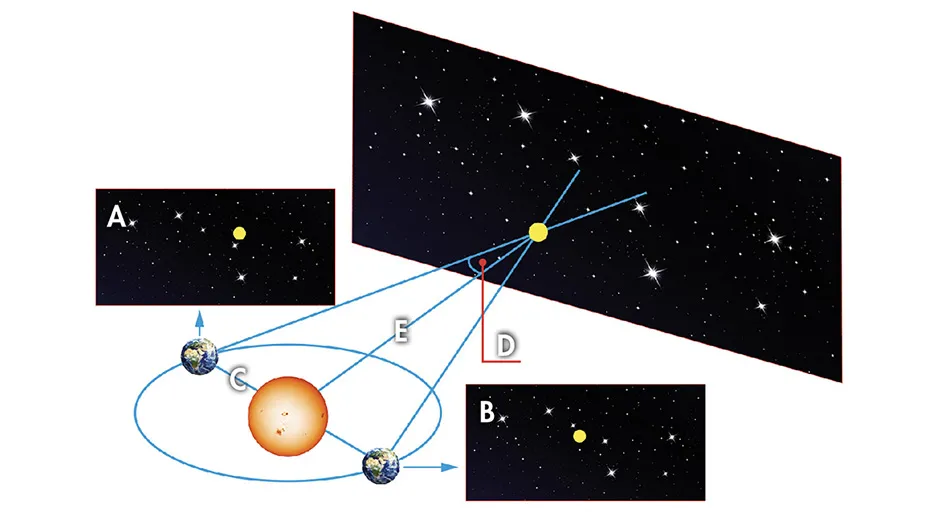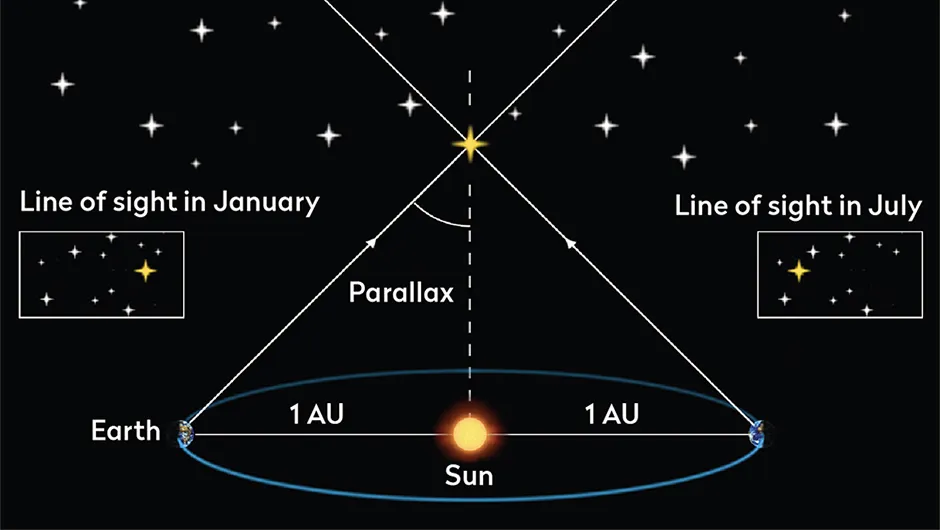The humble parsec is behind one of the most famous gaffes in cinematic history.
Extolling the virtues of his beloved Millennium Falcon, in Stars Wars Han Solo boasts that “it’s the ship that made the Kessel Run in less than 12 parsecs”.
This statement gives the impression that a parsec is a unit of time when in fact, as pedants have been pointing out constantly since 1977, it’s a unit of distance.
So what is a parsec?
Exactly what that distance is, though, is a little harder to define. Well, no, a definition is easy: a parsec is defined as “the distance at which 1 AU subtends an angle of one arcsecond”, 1 AU being 1 Astronomical Unit, i.e. the average distance between Earth and the Sun.
It’s understanding what the definition of a parsec actually means that’s the tricky part!
The parsec, you see, is a measurement that’s derived, using trigonometry, from observations of parallax, the phenomenon whereby an object will appear to be in two different locations when viewed along two different lines of sight
An example is when you peer nervously at the speedometer when your partner’s driving: speedometers are designed to be viewed face-on by the driver, so looking at its face and hands from an oblique angle will give you an incorrect reading.
Parallax in astronomy

Imagine you’re an astronomer looking up at two stars: one close to Earth and the other much further off.
If you look at the same two stars again six months later, when the Earth is on the other side of its orbit – that is to say, two AU from where it was previously – the two stars’ relative positions will appear different, due to the effects of parallax.
Now we need to draw an imaginary triangle with its points at the first observation point, the Sun and the near star.
That gives you right-angled triangle with a short leg of 1AU (the Earth-Sun distance).

If you extend the triangle’s other two sides on to the more distant object and measure the angle between them to be precisely one arcsecond (that is, 1/60 of 1/60 of a degree), then that near star is precisely one parsec from Earth.
That’s all a bit hypothetical, of course, because things just don’t stack up as neatly as that in real life.
But in a nutshell: the distances to stars can be worked out using trigonometry, and the parsec is an easy way of expressing those distances, not least because the units involved are smaller.
How far is a parsec in simple terms?

One parsec is equivalent to around 3.26 lightyears, and we can talk about kiloparsecs, megaparsecs and gigaparsecs rather than umpteen million lightyears.
Another real-world definition of the parsec, adopted by the International Astronomical Union, describes a parsec, in absolute terms, as being 2.06265×105 AU, if that helps!
Meanwhile, if you find yourself with an hour to kill, search for the Han Solo quote online and watch Star Wars fans tying themselves in knots attempting to explain the seeming error.
The current leading theory seems to be that the Kessel Run is a series of far-flung destinations and what Solo had done was work out a shorter route between them, not fly the same route faster.
This was retconned in the 2018 film Solo: A Star Wars Story, with varying degrees of success, depending on who you ask.
But far be it from us to suggest that George Lucas could ever be wrong…

